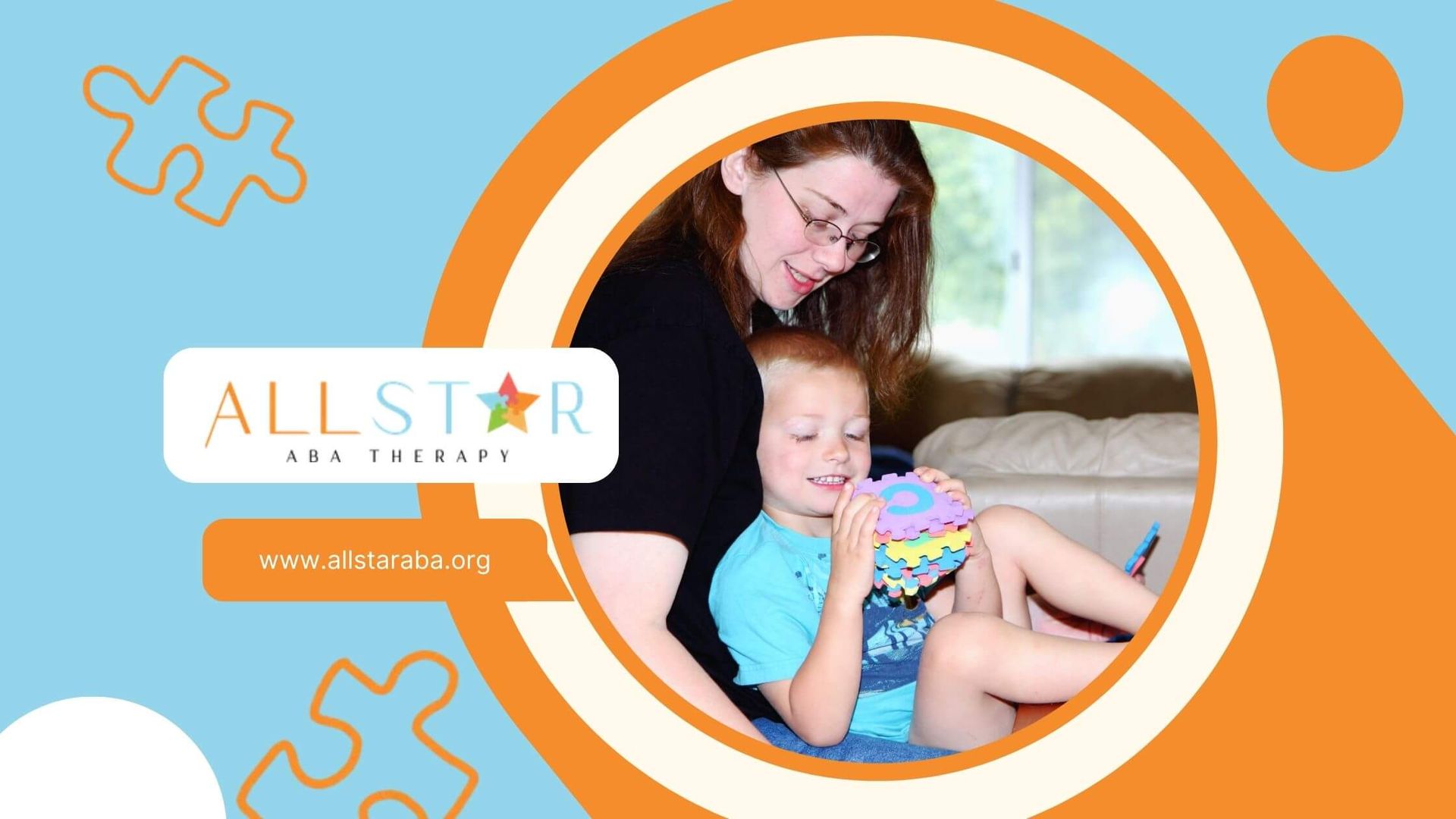New Paragraph
Epigenetics: The Key to Understanding Autisms Complexity
Understanding Autism Spectrum Disorder
Autism Spectrum Disorder (ASD) is a complex developmental disorder that affects communication, behavior, and social interaction. Understanding ASD is critical for providing support and interventions that can improve the quality of life for individuals living with the condition.
Overview of ASD
ASD encompasses a range of conditions characterized by challenges in social skills, repetitive behaviors, speech, and nonverbal communication. The spectrum nature of ASD means that each person with the disorder can have a unique set of strengths and challenges. The severity of symptoms can vary widely, from highly skilled individuals to those who require significant support in their daily lives.
Epigenetic alterations are increasingly recognized as an important factor in the development of ASD, affecting gene expression levels without altering the genomic DNA itself. Such epigenetic modifications include DNA methylation, histone modification, and microRNA regulation, which can be influenced by environmental factors. Exploring the relationship between epigenetics and autism is key to understanding the complexity of the disorder.
Prevalence of ASD
The
prevalence of ASD has been on the rise, with the current rate in the United States estimated at about 1 in 68 children, a significant increase from the year 2000. This rise could be due to better awareness, broader diagnostic criteria, or a true increase in the number of cases.
| Year | Estimated Prevalence of ASD |
|---|---|
| 2000 | 1 in 150 |
| Current Estimate | 1 in 68 |
The increasing prevalence underscores the importance of research into the causes of ASD, including genetic and environmental contributors, and the potential role of epigenetics in shaping these developmental challenges. With a deeper understanding of ASD, parents, educators, and healthcare professionals can better support those affected by the condition, exploring interventions that range from behavioral therapies to potential epigenetic therapeutic approaches.
For more information on specific factors that may contribute to the development of ASD, such as maternal immune responses, viral infections, and the autism and gut microbiome connection, please refer to our comprehensive resources on these topics.
Genetic Factors in Autism
Understanding the intricate relationship between genetics and Autism Spectrum Disorder (ASD) is essential for families, educators, and health professionals. Research suggests that genetic components play a pivotal role in the development of ASD, more so than environmental factors.
Role of Genetic Factors
Genetic risk factors are considered to significantly contribute to ASD, as evidenced by the high concordance rate in identical twins. Studies show that if one monozygotic twin has ASD, there is a 92% chance the other twin will also be affected, compared to only a 10% concordance rate in fraternal twins. These findings underscore the importance of genetic factors in the etiology of ASD.
Despite extensive research, the pathogenesis of ASD remains complex, and no specific diagnostic markers have been universally accepted. Nevertheless, the genetic predisposition in individuals with ASD is clear, and understanding these genetic factors is a critical step in unraveling the causes of autism.
Genes Associated with ASD
Genome-wide association and microscopy analysis have identified
numerous loci and genes associated with ASD. One significant chromosomal region is 7q, where several genes such as FOXP2, RAY1/ST7, IMMP2L, and RELN have been implicated in ASD's pathogenesis. For instance, mutations in the FOXP2 gene are linked to speech and language disorders, highlighting its relevance in ASD-related symptoms.
| Chromosomal Locus | Genes | Association with ASD |
|---|---|---|
| 7q | FOXP2 | Speech and language disorders |
| 7q | RAY1/ST7 | Linked to ASD; requires further research |
| 7q | IMMP2L | Linked to ASD; requires further research |
| 7q | RELN | Implicated in the pathogenesis of ASD |
This table presents a snapshot of genetic associations within the 7q chromosomal locus. It's important to note that while these genes are associated with ASD, further research is vital to establish their exact role and how they contribute to the condition's development.
The exploration of genetic factors in ASD continues to evolve, with promising directions in research focusing on both genetic and epigenetic and autism influences. As we learn more about the genetic underpinnings of ASD, the potential for more targeted interventions and support for individuals with ASD and their families grows.
Epigenetic Mechanisms in ASD Development
Epigenetic mechanisms are increasingly recognized as crucial contributors to the development of Autism Spectrum Disorder (ASD). These mechanisms can alter gene expression levels without changing the underlying genomic DNA, impacting the presentation and severity of ASD.
DNA Methylation in ASD
DNA methylation involves the addition of methyl groups to the DNA molecule, specifically to the fifth carbon of cytosine residues. This process typically acts to repress gene activity. In the context of ASD, changes in DNA methylation patterns have been observed in genes associated with the disorder, which may alter the normal development and function of the nervous system.
For example, research has shown alterations in the DNA methylation of genes like UBE3A and ASH1L, which are implicated in neural development and synaptic function. UBE3A is particularly significant as it is involved in the ubiquitin-proteasome pathway, which is crucial for protein degradation and synaptic plasticity. ASH1L plays a role in chromatin remodeling, which affects gene expression during brain development.
| Gene | Function in ASD | Methylation Change |
|---|---|---|
| UBE3A | Synaptic plasticity | Increased/Decreased |
| ASH1L | Chromatin remodeling | Altered Patterns |
Alterations in these methylation patterns can contribute to the neurological and behavioral characteristics observed in individuals with ASD. Understanding these changes offers a pathway to pinpointing potential causes of autism and developing interventions.
Histone Modifications in ASD
Histones are proteins around which DNA is wound, and their chemical modification can influence gene expression. Histone modifications, such as acetylation and methylation, can either up-regulate or down-regulate gene activity. In ASD, irregular patterns of histone modification have been observed, which may contribute to the neurological issues, including epilepsy and impaired neuronal communication.
The complexity of histone modifications in ASD suggests that multiple genes and pathways are likely affected, leading to the diverse range of symptoms seen in individuals with the disorder. For example, Rett syndrome, a condition that shares similarities with ASD, is linked to mutations in the MeCP2 gene, which encodes a protein that binds to methylated DNA and influences histone modification.
| Histone Modification | Potential Impact on ASD |
|---|---|
| Acetylation | Altered gene expression |
| Methylation | Changes in neuronal signaling |
Research into histone modifications in ASD holds promise for identifying new therapeutic targets and understanding the intricate relationship between genetics and environmental factors in the development of ASD. This research is a step towards unraveling the complex epigenetics and autism relationship, offering hope for future advancements in treatment and management of the disorder.
Environmental Influences on ASD
The development of Autism Spectrum Disorder (ASD) is influenced not only by genetic factors but also by environmental elements. Investigating these environmental aspects is essential to understand the complex etiology of ASD and to identify potential interventions.
Maternal Immune Responses
Maternal immune responses during pregnancy, such as those triggered by viral or bacterial infections, have been implicated in the development of ASD in offspring. Studies have shown a potential link between exposure to maternal immune activation (MIA) and an increased risk of ASD. This association suggests that the maternal immune environment plays a significant role in the early development of neural systems.
Understanding the impact of maternal health on the risk of ASD is vital for developing preventative strategies. For more information on how maternal factors might influence ASD risk, consider reading about maternal age and autism.
Viral Infections and ASD
Viral infections during pregnancy, such as rubella, measles, mumps, and influenza, have been specifically linked to a higher likelihood of infantile autism, especially when infection occurs during the first trimester. These findings highlight the critical role that the prenatal environment plays in the neurodevelopmental outcomes of children.
Environmental factors can increase DNA methylation, indicating potential epigenetic changes involved in ASD. Such epigenetic dysregulation may be influenced by these environmental factors and contribute to the development and progression of ASD.
It's important for parents and healthcare providers to be aware of the environmental risk factors associated with ASD. While there is no direct causal relationship between vaccines and autism, as detailed in our article vaccines and autism, other environmental exposures during pregnancy should be carefully considered and managed.
Further research into the environmental causes of ASD, such as viral infections and their epigenetic implications, can be found in our section on causes of autism. Additionally, the link between the autism and gut microbiome offers another dimension of how environmental factors may influence ASD.
Epigenetic Dysregulation in ASD
The intricate relationship between genetics and the environment is epitomized in the study of epigenetics, particularly concerning Autism Spectrum Disorder (ASD). Epigenetic dysregulation plays a significant role in ASD, affecting gene expression and contributing to the disorder's complexity.
MicroRNA Dysregulation
MicroRNAs (miRNAs) are small non-coding RNA molecules that regulate gene expression at a post-transcriptional level. They are pivotal in numerous biological processes, including neural development. In the context of ASD, there has been a noted dysregulation of miRNA expression. Studies have identified altered miRNA expressions in the ASD brain, particularly those involved in regulating neuronal genes and neural development pathways.
| miRNA | Association with ASD | Potential Impact |
|---|---|---|
| miR-23a | Upregulated in ASD | May affect synapse function |
| miR-132 | Downregulated in ASD | Involved in neuronal growth |
| miR-146a | Altered expression in ASD | Might be linked to immune responses |
The dysregulation of these miRNAs may disrupt various critical pathways, potentially leading to the phenotypic manifestations of ASD. This evidence suggests a need for further research into miRNA profiles as potential biomarkers for ASD diagnosis and treatment strategies.
Impact of Epigenetic Changes
Epigenetic changes, such as alterations in DNA methylation and histone modification, can influence gene expression without altering the genomic DNA sequence. These modifications are crucial in regulating gene expression and are significantly implicated in ASD.
For instance, differences in DNA methylation patterns have been observed in ASD-discordant monozygotic twins, suggesting a strong epigenetic component linked to the disorder. Specific histone modifications, like H3K4me3, and dysregulation in chromatin remodeling factors (e.g., CHD and ARID1B) have been noted in individuals with ASD, indicating that these factors play a role in the condition.
Genome-wide analyses have identified differentially methylated regions (DMRs) in the brains of individuals with ASD. These regions are associated with genes involved in immune responses, nervous system development, and neurological diseases, which could contribute to ASD pathology.
The impact of these epigenetic changes on ASD is profound, as they may not only contribute to the onset of the disorder but also influence its progression and severity. Understanding these changes can provide valuable insights into the underlying mechanisms of ASD, opening up new avenues for epigenetic therapeutic approaches and shedding light on the interactions between genetic and environmental factors.
The study of epigenetics and autism is crucial for unraveling the complexity of the disorder, and ongoing research may lead to improved outcomes for individuals with ASD and their families. As the scientific community continues to explore this field, it is essential for parents, educators, and healthcare professionals to stay informed about the latest findings and their implications on ASD management and support.
Future Directions in ASD Research
Research into Autism Spectrum Disorder (ASD) has made significant strides in understanding the genetic and environmental factors that contribute to the condition. However, epigenetic influences are now becoming a focal point for uncovering the complexities of ASD. The future of ASD research lies in unraveling these epigenetic mechanisms and exploring new therapeutic approaches that could offer more targeted interventions.
Epigenetic Therapeutic Approaches
The field of epigenetics offers promising new therapeutic approaches for individuals with ASD. One such approach involves epigenetic drugs, such as histone deacetylase inhibitors, which have shown potential applications in neurological diseases. These drugs work by modifying the epigenetic markers on DNA and histones, potentially reversing abnormal gene expression patterns associated with ASD.
Researchers are actively exploring how these epigenetic therapies can be tailored to address the specific dysregulations found in ASD. For instance, targeting differentially methylated regions (DMRs) identified in the brain of individuals with ASD might lead to novel treatments that can ameliorate symptoms or even alter the course of the disorder. The identification of DMRs in genes related to immune responses and nervous system development suggests a possible link between these pathways and ASD, opening up new avenues for intervention.
Genetic and Environmental Interactions
The interplay between genetic predispositions and environmental factors is critical in understanding ASD. Accumulated evidence shows that epigenetic factors, including DNA methylation, histone modification, and noncoding RNA, are influenced by environmental triggers and may play a significant role in the etiology of ASD. This suggests that both inherited genetic mutations and environmental exposures, such as vaccines and autism, maternal age, and the gut microbiome, can contribute to the development of ASD through epigenetic modifications.
Future research is expected to focus on the identification of specific environmental factors that can cause epigenetic changes and how these changes interact with genetic susceptibility to contribute to the onset of ASD. By understanding these interactions, scientists hope to develop preventative strategies and treatments that can mitigate the effects of environmental risks on individuals with a genetic predisposition to ASD.
The insights gained from epigenetic research are not only enhancing our comprehension of
causes of autism but also paving the way for personalized medicine approaches that could benefit individuals with ASD. By considering the unique genetic and epigenetic makeup of each individual, treatments can be customized to provide the most effective outcomes. With continued research and collaboration across various disciplines, the future holds promise for improving the lives of those affected by ASD.
Need Support?
We're Here to Help!
Our experienced team is ready to assist you. Reach out today to discuss how we can support your child's development and well-being.
Get started with expert ABA therapy today.








